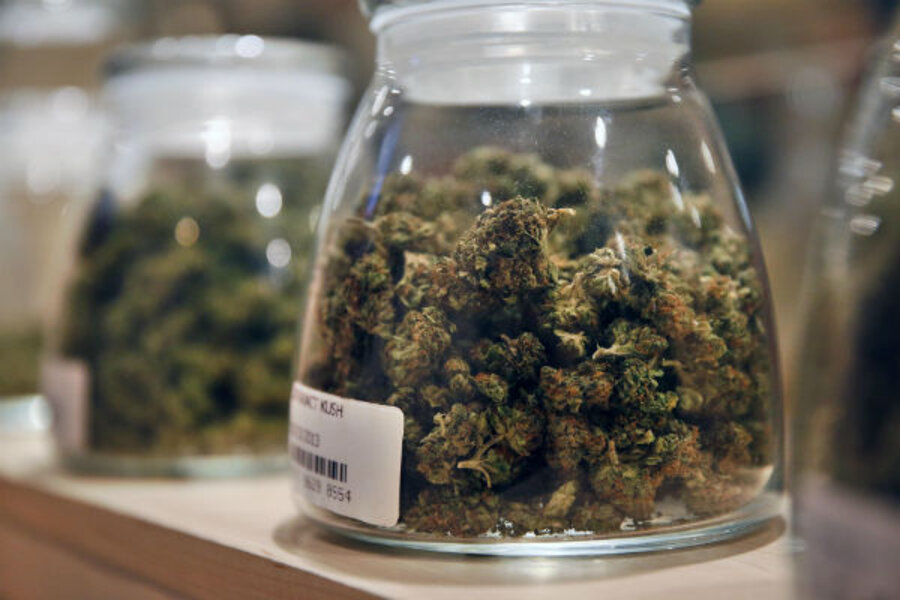Tots and pot: When to warn kids?
Loading...
Colorado and Washington legalized marijuana more than a year ago, and at least 14 states have legalization initiatives on upcoming ballots.
In Massachusetts, where I live, possessing a small amount of marijuana has been legal since 2008, and using it for medical reasons was legalized in 2012.
In fact, a medical marijuana dispensary will be opening in my neighborhood, in the Boston suburb of Newton, Mass., later this year.
It’s on one of my daily walking routes, only 0.8 miles away from my home, right by my local Whole Foods store, where I sometimes swing by to grab a slice of broccoli and goat cheese pizza.
In general, I have no disputes with the dispensary, at this point. What I am more concerned about, as a mom, is what potentially could come next – the more widespread legalization of marijuana for recreational use.
While my daughter is just a baby right now, I’m already thinking ahead about what pressures she will face as she grows up, particularly as a teen. In 10 or 15 years, will that dispensary be offering pot for recreational use, too? The possibility makes me cringe.
The effects of marijuana have long been documented, including affected judgement, decreased ability to focus, and slower reaction time. When the drug wears off, users have reported feeling anxious, depressed, or sleepy. Legal or not, it’s not something I want my daughter to use, especially as a teen, when her developing sense of the world could lead to misperceptions about the safety of drug use.
It seems to me that if it becomes legal for broader recreational use around the US – even with age limits – she could easily say to me, "If it were that bad, it would be illegal.”
It's hard, though not impossible, to argue with that stance.
“Besides,” I can imagine her saying, hand poised defiantly on her hip, “if it were that bad, why would the Girl Scouts be selling cookies in front of dispensaries?”
Yikes. How will I respond? I’ll just try to speak from my heart, being careful to listen to her point of view as well, taking into account that she’s growing up in a totally different time and place than I did.
I’ll try not to be shrill when I respond, though it’ll be hard. This look into my future already has me sweating, and puts all my worry about teething, night weaning, and such things into perspective.
So, perhaps I will tell her something like this: most important, I always want her to be clear-headed and in control.
Avoiding drugs and alcohol is one key way she can stay in charge of her own actions and be a lot healthier, too. I’m sure her schedule will be packed with studying, going to dances (she already adores dancing as an 11 month old), and perhaps playing a sport (track? She really books it when she crawls across a room).
Hopefully, drugs and alcohol won’t even enter the equation, but if she’s like most teens, the question will come up at some point. And I want to chat with her about the risks before it comes up with her friends, who might tell her, “Just try it, it’s OK, nothing bad will happen. Come on, everyone is doing it! Don’t be so lame.”
What will she reply? I hope she’ll remember what her mom said and say, “No thanks, I’m good.” Perhaps a friend or two will say no, too.
Talking things through really helps kids be more aware of the potential consequences of drug and alcohol use, and how to stand up to peer pressure. According to DoSomething.org, teens who consistently learn about the risks of using drugs from their own parents are “up to 50 percent less likely to use drugs” than those teens who don't. They know they’re not alone – their parents are looking out for them. And even when they say we’re boring and old-fashioned, at least their mental wheels will be turning so they can make thought-through decisions.
With lots of love, support, and a healthy dose of discipline, our kids will make it through adolescence. First, though, she’s got to learn how to walk, eat with utensils, and sleep through the night. We’re just taking this one step at a time.






